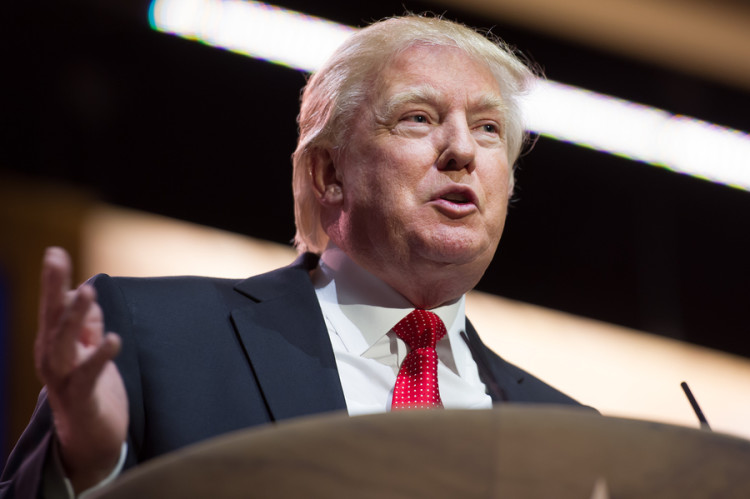Trump Has to Wait to Take His Victory Lap: Jonathan Bernstein

©2016 Bloomberg View
O44WED6KLVYK
(Bloomberg View) — It’s about the delegates now. By that measure, Tuesday was a great night for Hillary Clinton, and a mixed one for Donald Trump.
On the Democratic side, it’s pretty straightforward. Clinton wound up winning a squeaker in Illinois and leads narrowly in Missouri, but solid wins in North Carolina and Ohio and a blowout in Florida expanded her already unbeatable lead in delegates.
For his part, Trump won Florida and all 99 of its delegates. He also won in North Carolina, a proportional allocation state, and in Illinois, where the winner takes most delegates. The statewide count was close in Missouri between Trump and Ted Cruz.
But John Kasich won in Ohio, taking all 66 delegates, and will presumably stay in the race. Some people think his continued presence hurts Trump: That is, he’ll pick up some more delegates, doing well in states where Cruz can’t, and therefore help prevent Trump from wrapping up the 1,237 delegates he needs for a majority at the convention. But I lean toward the view that Trump is better off if his opposition is split between the Ohio governor and the Texas senator.
David Wasserman at FiveThirtyEight projected that Trump should have won 272 delegates on Tuesday. He probably wound up at about 236. It will keep him on pace to reach, just barely, 1,237 delegates.
Trump posted better overall percentages on Tuesday night than he has before — 46 percent of the vote in Florida, about 40 in Illinois, Missouri and North Carolina, and 36 percent in Ohio. But no result would have been enough to win in a two- candidate race.
We don’t know how hard it will be for Trump to increase his voting share above 40 percent, and above 50 percent if Kasich ever drops out. Can Cruz pick up enough mainstream conservatives to do well in states with less of his natural voting bloc — Christian conservatives? Can Kasich win significant numbers of delegates in the remaining Midwest and Northeastern states, and perhaps even in California?
We’re just over halfway finished with delegate allocation, and Trump’s lead over Cruz has expanded to a bit under 300. Plenty of delegates remain to be picked up in winner-take-all or winner-take-most states. If Trump gets the bulk of them, he’ll get to 1,237. Cruz is unlikely to reach that magic number in the remaining primaries, but he could take the delegate lead if he starts winning regularly. Even Kasich could mathematically do that.
And don’t forget: Many of the 2oo-plus delegates who are uncommitted so far or assigned to Marco Rubio and others who have dropped out will wind up free to choose how to vote at the convention in Cleveland, and they don’t have to wait until then to announce their decisions.
We now enter a new phase of the contest, with the states spreading out. The highlights coming up are Arizona and Utah on March 22, Wisconsin on April 5, New York on April 19, and then five states including Pennsylvania on April 26. Candidates will spend a bit more time in each state and build more serious organizations than they have able to do. Maybe that will affect results, and maybe it won’t.
In other words, we still have plenty of uncertainty on the Republican side.
This column does not necessarily reflect the opinion of the editorial board or Bloomberg LP and its owners.
To contact the author of this story: Jonathan Bernstein at jbernstein62@bloomberg.net To contact the editor responsible for this story: Katy Roberts at kroberts29@bloomberg.net
For more columns from Bloomberg View, visit http://www.bloomberg.com/view







No Comment